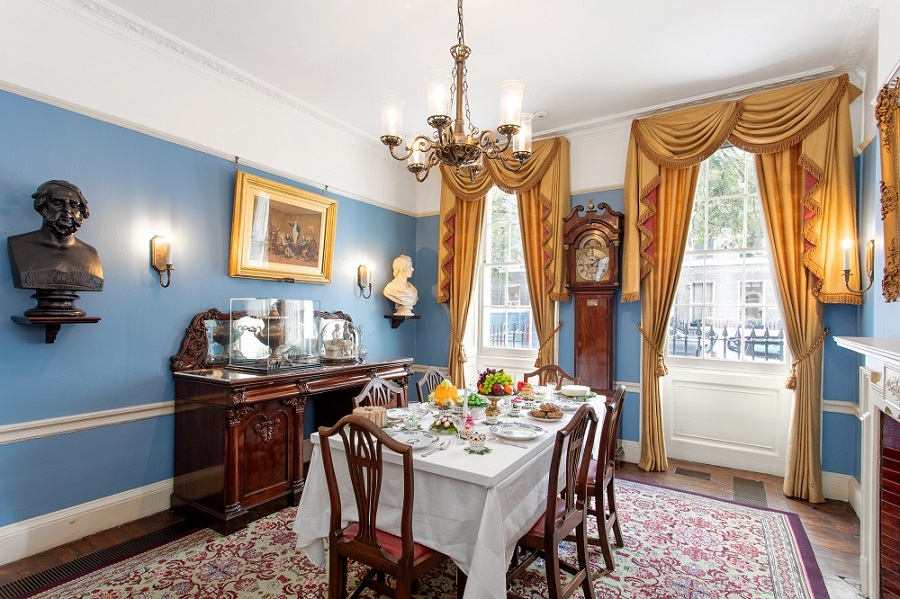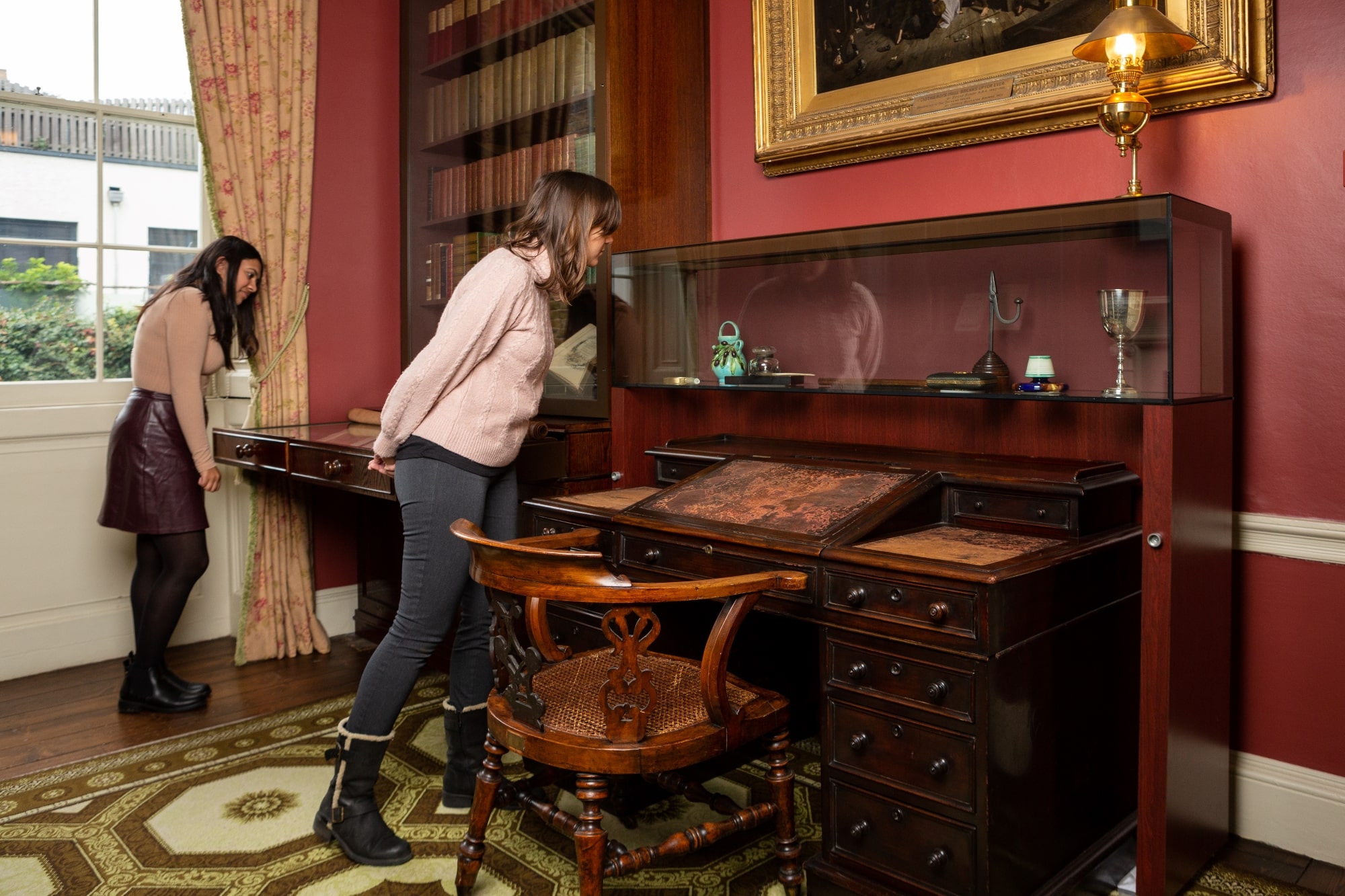Interview by Meghan Sullivan
We recently got the chance to ask Kayleigh Edun, the Education Officer at the Charles Dickens Museum, our burning questions about the museum, Dickens’s life and work and the ways students and teachers can engage with Dickens.
1. Can you tell us a bit about the Charles Dickens Museum and your role?
The museum is housed in Dickens’s only surviving London family home, a beautiful Georgian terraced house in Bloomsbury. Dickens was an ambitious young writer of 25 when he arrived here in 1837, enjoying the success of his first novel, The Pickwick Papers. Today the museum is an immersive historic house, telling the story of Dickens’s life, family and career as well as providing fascinating insights into the life of middle-class Victorian Londoners.
ambitious young writer of 25 when he arrived here in 1837, enjoying the success of his first novel, The Pickwick Papers. Today the museum is an immersive historic house, telling the story of Dickens’s life, family and career as well as providing fascinating insights into the life of middle-class Victorian Londoners.
As Education Officer, I support visitors of all ages to immerse themselves in Dickens’s world through interactive tours, workshops and events.
2. What do you most enjoy about working there?
This historic home and the original artefacts held here really help us to bring stories of Dickens to life, and I always enjoy the conversations that are sparked during visits, particularly among children and young people. Teaching school sessions is my favourite aspect of the job and the pandemic has made me appreciate the students that we welcome onsite more than ever. However, a silver lining has been the introduction of a virtual learning programme. Students can now take part in interactive tours and workshops from the comfort of their own classroom. It has been such a joy to meet students in this way. We have even had groups visiting virtually from the United States!
3. Do you have a favourite object from the museum?
This would have to be a fragment of the original manuscript from Oliver Twist, one of my favourite novels. It’s one of only a handful of pages known to exist from this manuscript. The somewhat messy page gives a sense of the speed and enthusiasm with which Dickens worked, aware of his heavy workload and approaching publication deadlines. To know that he painstakingly produced this manuscript by hand, here in the study at Doughty St, is a very special thought. The page is usually displayed in the study alongside his desk but if you visit over the next few months, you will find it pride of place in our upcoming temporary exhibition, More! Oliver Twist, Dickens and Stories of the City.
4. Do you have any tips for students who are approaching Dickens’s work for the first time?
Dickens wrote to raise awareness of social injustices. His fans ranged from wealthy middle-class readers at home by the fireside to impoverished and often illiterate workers gathering in crowds to hear the latest instalment of Dickens read aloud in taverns. Dickens used emotion to connect with these audiences. As you read his work observe how you feel. Are you anxious for little Oliver, lost and alone as he flees to London? Are you frustrated with Scrooge, refusing to acknowledge the desperate conditions faced by the poor? Perhaps you are angry with Squeers, doling out measly rations of watered-down milk to his neglected pupils. Investigate how you feel and then think about why Dickens might have wanted you to feel this way.
5. Is there any advice you can give to teachers that are teaching Dickens? How can they help their students connect to his work?
The core themes of Dickens’s work are rooted in his passion for exposing social injustice and effecting social reform. It is difficult to appreciate his messages without exploring the context that he was writing in and his motivations as a writer. Dickens lived in a London where the privileged elite often turned a blind eye to the desperate conditions faced by those living in extreme poverty. His anger stemmed from personal experience. When Dickens was twelve, he was sent to work in a factory following his father’s imprisonment for debt, a traumatic experience that remained with him for life. Of course, many of the issues that were close to Dickens’s heart remain relevant. Exploring these parallels helps students to relate to Dickens’s work and to understand why we study these texts all over the world today.
6. What’s your favourite story or fact about Dickens?
This would have to be an anecdote from his daughter, Mamie, included in her book, My Father As I Recall Him. Whilst she recovered from a long illness, Dickens was keen to keep Mamie close by, and insisted that she rest in his study while he wrote. She vividly recalls Dickens rushing to a nearby mirror and transforming into ‘the creature of his pen,’ as he brought his characters to life. I love this story as it offers an insight into Dickens as an intensely creative personality as well as a loving and dedicated father. Audio recordings of Mamie’s memories in her own words are available on our website along with many other highlights from our collections.
illness, Dickens was keen to keep Mamie close by, and insisted that she rest in his study while he wrote. She vividly recalls Dickens rushing to a nearby mirror and transforming into ‘the creature of his pen,’ as he brought his characters to life. I love this story as it offers an insight into Dickens as an intensely creative personality as well as a loving and dedicated father. Audio recordings of Mamie’s memories in her own words are available on our website along with many other highlights from our collections.
Kayleigh Edun is the Education Officer at the Charles Dickens Museum, 48 Doughty Street, London, WC1N 2LX.
Looking for more support on A Christmas Carol, Great Expectations and other works by Dickens? Why not check out our full range of expert resources?